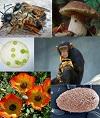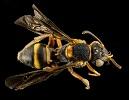Microbiology is the scientific study of microorganisms which includes single celled organisms, typically prokaryotic species and multi-celled organisms which are eukaryotes. Additionally, microbiology can involve the study of organisms lacking cells, which are referred to as acellular organisms.
Microbiology includes many different branches and these branches are based on taxonomy. Some of these branches include:
- Mycology: The study of fungi
- Bacteriology: The study of bacteria
- Virology: The study of viruses.
These are only some of the branches of microbiology and there is much overlap between these branches.
Microbiology is a critical scientific study because it has many diverse applications. For example, microbiology is involved in the study of food. Microbes, such as fungi, are the cause of food spoilage and other microorganisms participate in fermentation which produces foods. Thus, this is a way in which the basics of microbiology can be applied to larger fields. Medicine and pharmaceuticals are other fields in which microbiology can be incorporated.
Microbes play a part in everyday life, both in beneficial and non-beneficial ways. Although on the one hand bacteria can be the cause of human illnesses, bacteria can also be used in industrial processes, for example to compose amino acids.
Microbiology is a field of science which requires continued funding and research. Hopefully, further study into the realm of microbiology, examining the behaviour and properties of different unicellular and multicellular organisms will uncover other advantageous applications of microbes.
Title Image Credit: flickr.com
© BrainMass Inc. brainmass.com June 30, 2024, 9:23 am ad1c9bdddf




